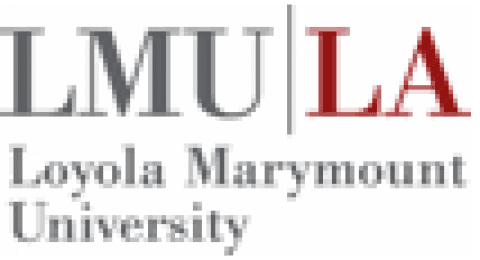

LMU Film School First to Launch Fully Networked Creative Village
As students return to the LMU School of Film and Television this fall, they’ll discover an entirely networked digital environment that allows for seamless real-time production at all phases of the filmmaking process as well as a major facilities expansion of the school’s animation program, the result of a $1.5-million investment in SFTV’s infrastructure. The new facilities were designed by the global architecture and design firm Gensler.
From the first camera shot, through editing, sound mixing, title sequence and visual effects all the way through to the final result being projected in the School’s state-of-the-art Mayer Theater (named after Louis B. Mayer), the film lives entirely on a secure, high-speed server. Student projects are never downloaded to a hard drive ortransferred back and forth between collaborators. With this new high-speed turnkey production system and easy drag and drop interface, LMU film and television students gain creative time to pursue alternative ideas and solutions.
Additionally, LMU animation students will walk into a new studio that is more than doubled in square footage and features virtual cinematography on a motion capture/stop motion stage.
“LMU is a leader among the nation’s film schools offering students a completely networked model of production and post-production,” said Stephen Ujlaki, dean of the School. “Our networked creative village opens up exciting opportunities for our students to collaborate, experiment and to learn. And it means LMU graduates are more prepared than ever to enter the industry.”
New Animation Studio Opens — first to offer virtual cinematography
This fall marks the debut of a new state-of-the-art animation studio, making LMU Animation the first film school in the world offering virtual cinematography. James Cameron’s “Avatar” and Steven Spielberg’s upcoming “The Adventures of Tintin” utilize this technology.
The studio’s new 16’ by 16’ motion capture/stop motion stage was built under the expert guidance of LMU visiting professor Justin Denton. Denton is with Halon, inventors of the OptiTrack virtual camera system.
The School’s Animation Department now occupies the entire top floor of the three-story film school building.
LMU Animation offers students a classical approach to this complex and multifaceted medium. It is fundamental, for example, that animation students learn how to integrate the knowledge of relevant art history and practices into the vitality of our present, and the school firmly believes that drawing is not only a skill but also a mode of thought. The Art of Drawing teaches students that the human body is the measure of the universe; that composition and design relate directly with the innerstructure of nature; and that an image is always a point of view. “We do not teach 3D but 4D animation, as it is in the dimension of time that you can breathe life into an object,” says José GarcÃa-Moreno, Chair/Animation, School of Film and Television, LMU. “The future of animation will profoundly affect not only art and technology but also human thought.”
21st Century Skills Enhanced by New Networked Environment
Current college students face a litany of post-graduation challenges never before encountered. “Because of rapid economic and social change, schools have to prepare students for jobs that have not yet been created, technologies that have not yet been invented and problems that we don’t yet know will arise,” said Andreas Schleicher, head of the indicators and analysis at the Organization for Economic Co-Operation and Development.
SFTV’s new networked “creative village” emulates professional systems currently in use in only a handful of studios and production houses, providing the students with a strong practical foundation when they transition to the entertainment industry. At the same time, the new fully networked facility addresses the three most important 21st century skillsets as recently identified by a consortium of educators, corporate executives and government leaders — collaboration, creative problem solving and innovation.
